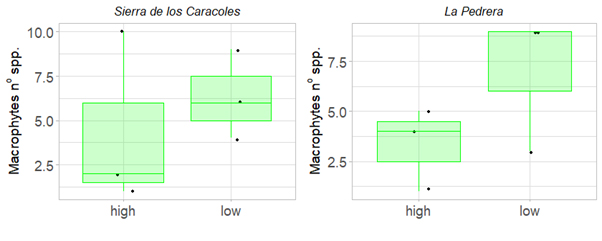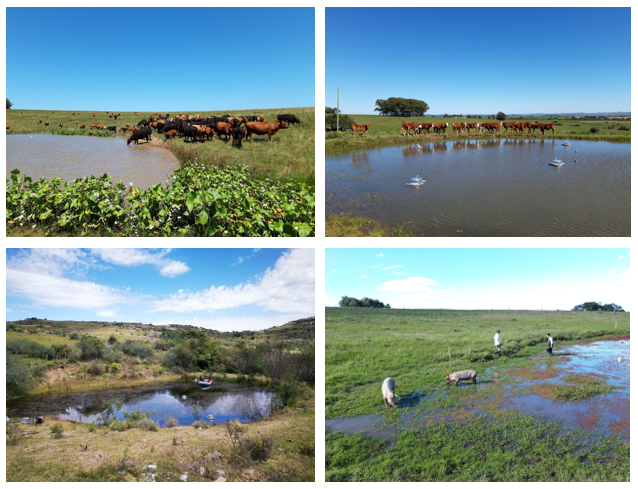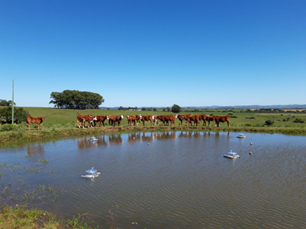In Uruguay, most artificial ponds are built in rural landscapes to collect freshwater for livestock and for irrigating agricultural crops in times of drought, to guarantee and boost agricultural production. They are generally unappreciated, perhaps due to their small size and artificial nature.
Given gaps in legislation and lack of local knowledge on their general functioning, the management of rural artificial ponds relies on landowners’ and farmers’ criteria. This means that artificial ponds are subject to the different intensities in land use and also to management actions that can differ enormously between farms. Some farms, for example, put in place restrictions on cattle access and measures to protect water quality and native vegetation and fauna. However, on most the prime focus is to secure the ecosystem service for which they were built: water storage. That is why exotic and invasive species, such as carp, are sometimes introduced. Other common practices include the removal of sediment and of littoral vegetation to facilitate cattle access to water.
The potential negative impacts of some management practices, which include higher greenhouse gas emissions, loss of native biodiversity, and facilitation of toxic cyanobacterial blooms, are largely ignored or underestimated.
Within the PONDERFUL project, the Centro Universitario Regional del Este (Universidad de la República, Uruguay) is carrying out investigations on agricultural ponds of contrasting land use intensity. Our group has found striking differences in the richness of aquatic plants among nearby ponds with contrasting land use intensity in their watersheds and consequent contrasting trophic state. Particularly, we have found lower submerged plant species richness in the ponds with high trophic state than in nearby ponds with low or medium land use intensity and low trophic state (see plot below).

In two particular pondscapes (Sierra de los Caracoles y La Pedrera) we also compared ponds where livestock have free access to water with fenced ponds where livestock cannot reach the water – or can only access through small areas. Fencing the perimeter of the ponds to prevent direct access of animals maintains water quality and preserves the area around the edge of the ponds. One of our main findings is that excluding livestock increased aquatic plant richness in the ponds. This fact is illustrated in the pictures below, where we can see ponds with restricted access through fencing (left) and ponds with unrestricted access of livestock to water (right). Pictures above were taken at ponds located in the La Pedrera (Rocha county) demosite, whereas pictures below belong to ponds located in Sierra de los Caracoles (Maldonado county) demosite. Please note in some of the photos the chambers that collect the greenhouse gases emitted by the ponds.

Diverse aquatic plant communities produce many benefits in ecosystems, such as overall higher biodiversity, lower carbon emissions, and higher resilience against external disturbances, among many others.
These results suggest that both land use intensity and local management measures can greatly modify the direction and magnitude of ecosystem services potentially provided by artificial ponds for both people and nature. This research area has enormous importance for the country, as the construction of rural ponds is increasing dramatically in Uruguay.
Uruguayan Team: Maite Colina, Clementina Calvo, Florencia Cuassolo, Leandro Gallo, Emilia Heber, Constanza Passadore, Franco Teixeira de Mello & Mariana Meerhoff

